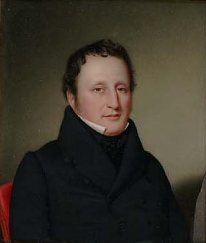A review of "The Book of Jasher: Referred to in Joshua and Second Samuel" by Mordecai Noah.
This is the English translation of “Sefer
haYashar”, a Rabbinical Jewish work of unknown origins. The oldest extant
version was published in Venice in 1625. Much of the contents are based on
older Jewish “midrashim”, legends with an exegetical purpose which considerably
expand and embroider the stories found in the Bible.
The English translation was published in 1840 in New York by Mordecai Noah, the
same Noah who years earlier had been U.S. consul in Tunis and then attempted to
create a “Zionist” mini-state at Niagara Falls. The anonymous translator was later
identified as Moses Samuel, who apparently believed that “Sefer haYashar” was
based on the lost Book of Jasher mentioned in the Bible. While Noah apparently
didn't believe this, he nevertheless marketed the translation under the title
“Book of Jasher”. In 1886, the Mormon Church acquired the rights to Samuel's
translation from Noah's estate, apparently because Mormon prophet Joseph Smith
had highly valued the work. This explains why subsequent editions give Salt
Lake City as the place of publication. Samuel's, Noah's and the Mormons'
"Book of Jasher” should not be confused with other works brandishing the
same title, which don't incorporate genuine Jewish legends and hence could be
considered outright hoaxes. Thus, there's a 18th century Deist-Rationalist
"Book of Jasher" which fraudulently claims to be the work of Roman
and Carolingian translators of a lost Biblical scripture.
I admit that I'm not competent to really comment on Jewish apocrypha or
midrashim, and that I gleaned most of the above information from Wiki…
But yes, I've read about a third of “Sefer haYashar” (Samuel & Noah
version). The work is of considerable interest if Biblical studies, Jewish
legends or Mormonism is your thing. The embellishments of the “Old Testament”
stories are many and varied. Enoch was ruler of the Earth and all kings paid
him homage. Nimrod built the tower of Babel, tried to have Abraham killed
(twice!) and was slain by Esau. Abraham's father Terah was a polytheist, but
Abraham destroyed his idols. Esau sold his birthright to Jacob without
trickery, fearing persecution of Nimrod's supporters. The "Book of
Jasher" conflates the story of Job with that of Abraham's sacrifice of
Isaac. The old patriarch passes Satan's test and Isaac even volunteers for the
sacrifice. Ishmael is said to have returned to Abraham, dwelling in Canaan. And
so on! Some of these stories can also be found in the Quran, obviously because
Muhammad was conversant with Rabbinical traditions.
Some themes are avoided. I didn't see anything on the Nephilim, nor were the
inhabitants of Sodom accused of homosexuality. They did have pretty original
ways of showing their inhospitality, though! Gentile legends have been
incorporated into the narrative, including a garbled account of the Roman
abduction of the Sabine women, and a story which identifies the ruler of Egypt
with Osiris in Euhemeristic fashion. I did notice a few anachronisms,
suggesting that the final version of “Sefer haYashar” may indeed have been
edited relatively late. Italy, France, Lombardy and Tuscany are mentioned in
this supposed “Biblical” narrative.

No comments:
Post a Comment